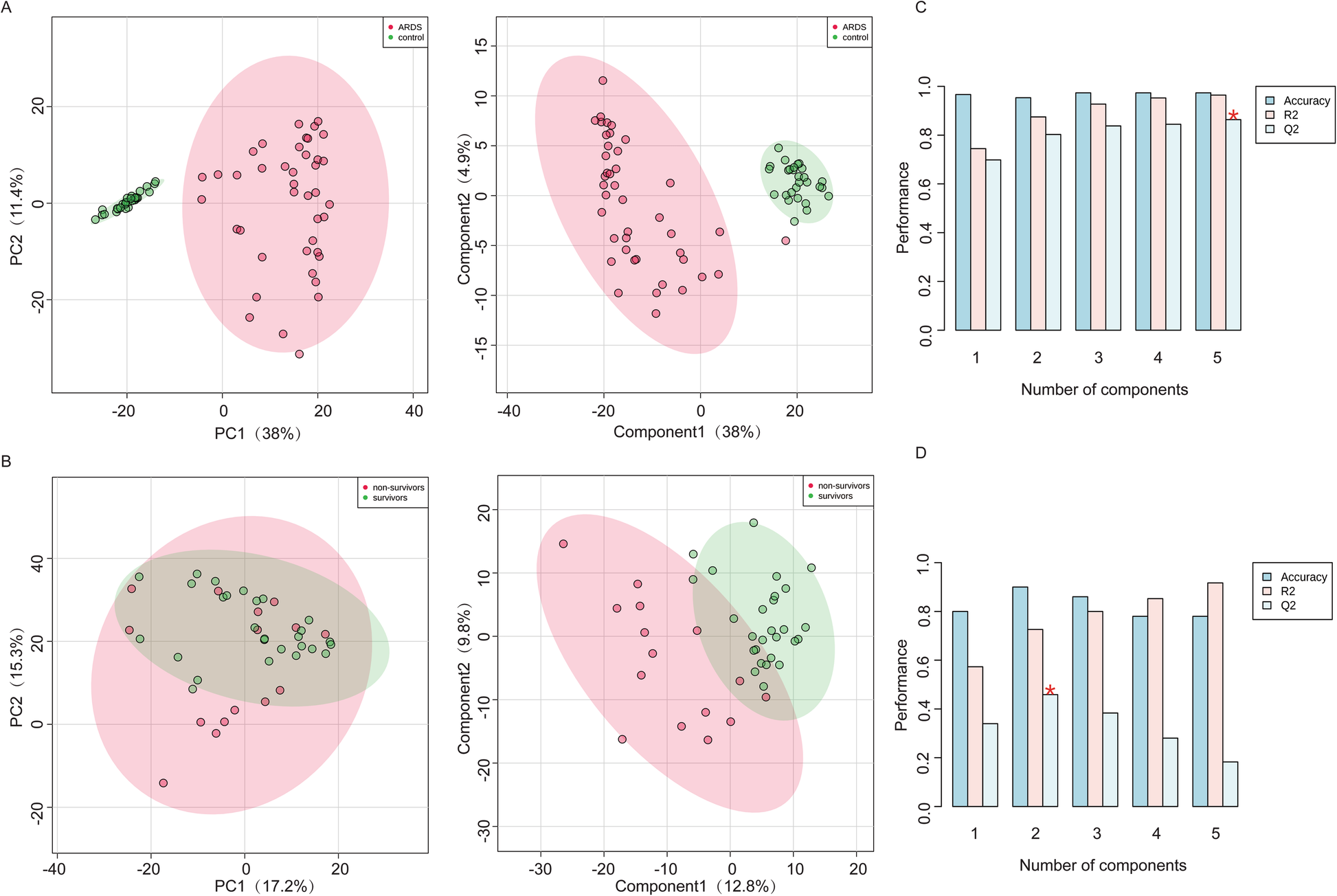Looks best to stop taking phenylalanine during respiratory infection.
i don't think below shows a positive rise in response to infection i think its more of a negative association - the rabbit study found impairment of immunity, and considering arginine is beneficial in respiratory infection and phenylalanine could lower this that also might play a role in why phenylalanine levels are associated with infection severity

 respiratory-research.biomedcentral.com
respiratory-research.biomedcentral.com
Results
The metabolomic profiles of patients with ARDS were significantly different from healthy controls, difference was also observed between metabolomic profiles of the non-survivors and the survivors among the ARDS patient pool.
Levels of Phenylalanine, D-Phenylalanine and Phenylacetylglutamine were significantly increased in non-survivors compared to the survivors of ARDS.
Phenylalanine metabolism was the most notably altered pathway between the non-survivors and survivors of ARDS patients. In vivo animal experiments demonstrated that high levels of Phenylalanine might be associated with the severer lung injury and increased mortality of ARDS.

 jamanetwork.com
jamanetwork.com

 www.ncbi.nlm.nih.gov
www.ncbi.nlm.nih.gov
Phenylalanine and tyrosine were significantly lower in mild disease as compared to moderate and severe groups. Linear regression models showed that phenylalanine is independently and positively associated with disease severity regardless of the cytokine analyzed and after adjustment for potential confounders. In addition, mild cases showed consistently lower serum phenylalanine levels within the first ten days from disease onset to hospital admission.
Plasma amino acid levels in individuals with bacterial pneumonia and healthy controls Plasma amino acid levels in individuals with bacterial pneumonia and healthy controls
Patients with CAP had markedly decreased PAA of 12 amino acids on Day 0. Citrulline, histidine, and tryptophan remained low in male, while aspartic acid, asparagine, ornithine, proline, and threonine were higher on Day 7 in both males and females. Phenylalanine increased at Day 0 and Day7.
Elevated Plasma Phenylalanine in Severe Malaria and Implications for Pathophysiology of Neurological Complications Elevated Plasma Phenylalanine in Severe Malaria and Implications for Pathophysiology of Neurological Complications
Several plasma amino acids were significantly lower in the clinical malaria groups than in healthy controls. Despite the differences, phenylalanine was the only amino acid with mean levels outside the normal range (40 to 84 μM) and was markedly elevated in children with cerebral malaria (median [95% confidence interval], 163 [134 to 193] μM; P < 0.0001) and adults with all forms of severe malaria. In adults who survived severe malaria, phenylalanine levels returned to normal, with clinical improvement
Maintenance of plasma phenylalanine homeostasis is disrupted in severe malaria, leading to significant hyperphenylalaninemia. This is likely a result of an acquired abnormality in the function of the liver enzyme phenylalanine hydroxylase. Determination of the mechanism of this abnormality may contribute to the understanding of neurological complications in malaria.
i don't think below shows a positive rise in response to infection i think its more of a negative association - the rabbit study found impairment of immunity, and considering arginine is beneficial in respiratory infection and phenylalanine could lower this that also might play a role in why phenylalanine levels are associated with infection severity

Increased mortality of acute respiratory distress syndrome was associated with high levels of plasma phenylalanine - Respiratory Research
Background There is a dearth of drug therapies available for the treatment of acute respiratory distress syndrome (ARDS). Certain metabolites play a key role in ARDS and could serve as potential targets for developing therapies against this respiratory disorder. The present study was designed to...
Results
The metabolomic profiles of patients with ARDS were significantly different from healthy controls, difference was also observed between metabolomic profiles of the non-survivors and the survivors among the ARDS patient pool.
Levels of Phenylalanine, D-Phenylalanine and Phenylacetylglutamine were significantly increased in non-survivors compared to the survivors of ARDS.
Phenylalanine metabolism was the most notably altered pathway between the non-survivors and survivors of ARDS patients. In vivo animal experiments demonstrated that high levels of Phenylalanine might be associated with the severer lung injury and increased mortality of ARDS.

Inhibition of the Immune Response by Phenylalanine
In a previous study,1 phenylalanine (L-phenylalanine) was found to cause an inhibition of the immune response to diphtheria toxoid in rabbits and rats. Because phenylalanine interferes with the in vitro uptake of histidine, ornithine and tyrosine by the brain,2 it appeared that phenylalanine may...

Phenylalanine and COVID-19: Tracking disease severity markers
Although there are several severity predictors for COVID-19, none are specific. Serum levels of phenylalanine were recently associated with increased inflammation, higher SOFA scores, ICU admission, and mortality rates among non-COVID-19 patients. Here, ...
Phenylalanine and tyrosine were significantly lower in mild disease as compared to moderate and severe groups. Linear regression models showed that phenylalanine is independently and positively associated with disease severity regardless of the cytokine analyzed and after adjustment for potential confounders. In addition, mild cases showed consistently lower serum phenylalanine levels within the first ten days from disease onset to hospital admission.
Plasma amino acid levels in individuals with bacterial pneumonia and healthy controls Plasma amino acid levels in individuals with bacterial pneumonia and healthy controls
Patients with CAP had markedly decreased PAA of 12 amino acids on Day 0. Citrulline, histidine, and tryptophan remained low in male, while aspartic acid, asparagine, ornithine, proline, and threonine were higher on Day 7 in both males and females. Phenylalanine increased at Day 0 and Day7.
Elevated Plasma Phenylalanine in Severe Malaria and Implications for Pathophysiology of Neurological Complications Elevated Plasma Phenylalanine in Severe Malaria and Implications for Pathophysiology of Neurological Complications
Several plasma amino acids were significantly lower in the clinical malaria groups than in healthy controls. Despite the differences, phenylalanine was the only amino acid with mean levels outside the normal range (40 to 84 μM) and was markedly elevated in children with cerebral malaria (median [95% confidence interval], 163 [134 to 193] μM; P < 0.0001) and adults with all forms of severe malaria. In adults who survived severe malaria, phenylalanine levels returned to normal, with clinical improvement
Maintenance of plasma phenylalanine homeostasis is disrupted in severe malaria, leading to significant hyperphenylalaninemia. This is likely a result of an acquired abnormality in the function of the liver enzyme phenylalanine hydroxylase. Determination of the mechanism of this abnormality may contribute to the understanding of neurological complications in malaria.
